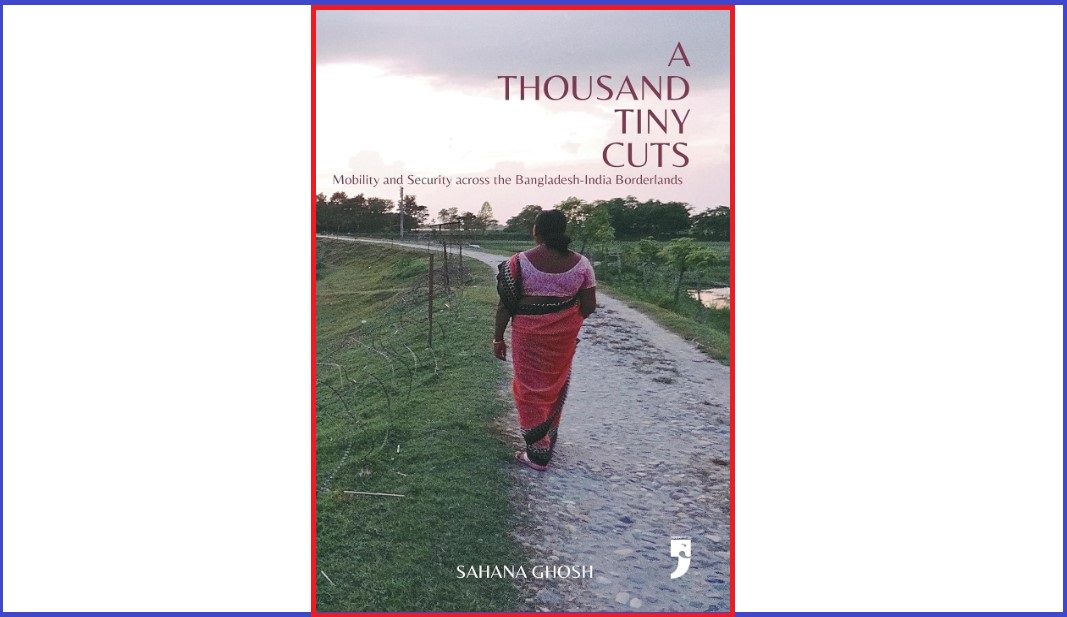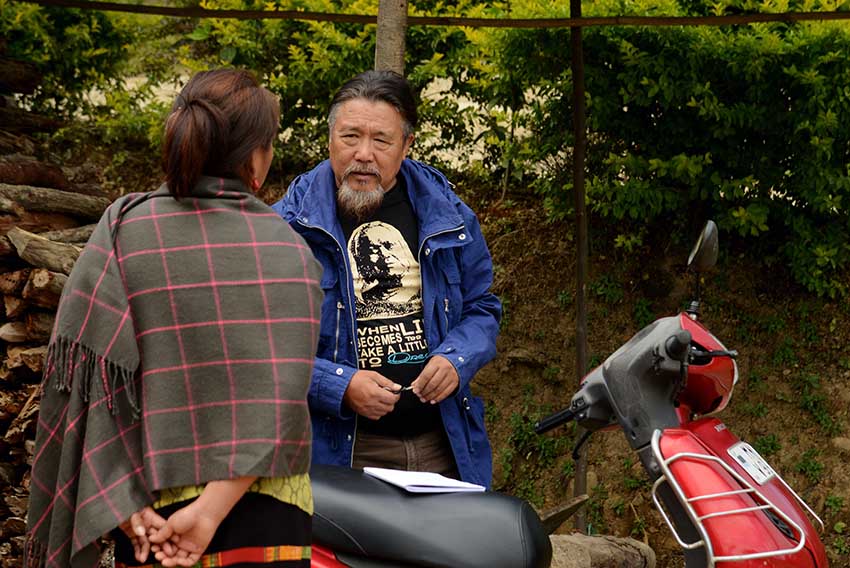Book Name: Infrastructure of Injustice: State and Politics in Manipur and Northeast India.
Author: Raile Rocky Ziipao
Publisher: Routledge.
In a state filled with dichotomous setting of oppositions that disrupt everyday life so much that it has become quite normal to witness sudden lockdowns and restrictions imposed, the book explores the central theme played by the existing arrangements of infrastructure and the lifeworld that springs out of the uneven distribution of it across regions within the state. The importance of Infrastructure is well captured in the words of Ziipao:
Infrastructure entails (dis)connectivity, circulation of goods, and movements of people. It establishes ideas, crosses socio-cultural boundaries, maintains and expands social intersections, and deepens community relations. (Ziipao: 1)
The Key focuses of the book revolve around the infrastructure of injustice, infrastructural injustice, and infrastructure deficit regions. Since the merger with India in 1949, the State underwent three turbulent politico-economic phases (Sharma: 1) despite the planning and implementation of infrastructure largely for the hills have been left out neglected and are concentrated in the valley where the dominant Meitei community resides. Ziipao brings out the perspectives from within[1], thereby highlighting the innumerable injustices suffered by the hills due to lack of infrastructure. The politics of power drives infrastructures to rise in spaces where the power is concentrated and on this line, Imphal west district that lies in the valley has the highest district infrastructure index, followed by other districts of that valley that are much higher in the index than the ones in the hills. Disproportionate budgetary allocations, sheer neglect in terms of political and infrastructural emphasis, coupled with the hegemony of the dominant community explain why the hills, which encompass 90% of the state area, are still underdeveloped.
The existing tension within the state due to various ethnic conflicts, insurgency, militarisation, etc has added more to the misery of the state. Ziipao points out that ‘Development’ would solve the age-old problems and is often perceived as the panacea of all problems. Although various dams and infrastructural projects have been taken up and even inaugurated, they are not functional. This attributes to improper planning and long gestation periods for the completion of projects. The State is heavily prone to conflicts and chaos due to the existing differences and social realities that overlap when certain developments are planned or take place. The political economy of development is disturbed by complexes that slow down infrastructures to development.
Chapter 3 presents how, when any differences and conflicts arise, contestation takes place through the formation of pressure groups such as the Joint Action Committees or via. the existing Civil Society Organisations that are organised on ethnic lines firing at the opposing parties, contradicting each other. Opposing parties vary from the Government to other non-state actors/groups. The physical ground where the development of infrastructure should take place is riddled with various underground insurgent groups occupying a major control of the progress and functioning of the state. And during the period of contestation-contradiction and negotiation, it is the common people that bear the brunt of the social reality.
In a landlocked state like Manipur, Roads are the most viable means of connectivity. Yet it is still sporadically maintained. Roads have been the most visible site of protest. A protest may spring from various reasons ranging from killings due to encounters to lack of infrastructure and various other socio-political reasons. The book minutely captures the attributes and problems of connectivity driven by roads; good and bad. Frequent landslide, loopholes, bad conditions and lack of maintenance of roads happens more acutely in the hills. National Highway 2 is infamous for the bandhs, blockades, and counter-blockades that is imposed from time to time by various non-state actor to meet their demands. Ziipao states that the democratic form of protest doesn’t have a space in the state and various forces have gone cutting connectivity of the highways for days and months. Further, it points out the existence of anarchy on the highways as it has become a ‘money-spinning’ highway where illegal sums (or taxes) are collected by state and non-state actors. Hence Ziipao posits that the lack of proper administration and control over the road has turned it into a political highway. The chapter also points out the road disparity between the hill-valley in terms of conditions, maintenance, budgetary allocations, density, and total surface of roads.
The other theme that highlights the central theme of the book is through looking at Electricity. The smooth functioning of modern infrastructure such as offices, schools, hospitals, etc depends on the availability and supply of electricity. But in Manipur, where electricity is regularly irregular, the progress of development gets hindered. Many villages are electrified in paper without even a single bulb being lighted, this sheds light on the existence of blatant corruption in rural electrification programs. Priority of power supply again undergoes the route of the valley at first and the remaining power is supplied to the hills. Ziipao argues that reliability and affordability would help in bridging gaps. Despite mega hydroelectric projects being inaugurated in the State, leave alone efficient supply, production of electricity has not been even made properly. Power generation to meet the state supply was planned by the construction of dams. Dam constructions have in turn violated the natural-traditional lives of many tribals by submerging lands, and forests and displacing villages. It further points out that the state is an electric deficit state, as consumption is not met from the local production thereby it imports huge Kilowatts to meet the demand. Before the Prepaid system, the number of electric bills to be paid to Central sector plants was not able to be collected from the consumers. The system of collection and taxation was filled with loopholes and the state was incurring a huge sum of loss every year. The new prepaid metering system although benefitted the government in an efficient collection from the consumers (cost recovery), the rate of electricity is so high that bypassing the prepaid meter is antithesis, challenging the reform of power supply.
Various actors come into play during planning, execution and delivery infrastructures. Agencies are bought through back door dealings that would benefit the implementing parties at large rather than the targeted audience the infrastructure is supposed to give. Ziipao in Chapter 6 identifies Four broad categories of stakeholders in creating infrastructures. They are a) international,b) national, c) state and d) key ethnic stakeholders. All 4 stakeholders have their own modus operandi and the interaction between them play an important role in shaping the output. State stakeholders include 8 layers. Ziipao examines the role of each stakeholder very carefully and concludes that the several layers of transaction undergone to please and complete any project development undermines the output as each has to make their cuts from it. There is almost no escape from the illegal taxes imposed by stakeholders. Here, stakeholders include both the Government of Manipur, Ministers/MLAs, contractors, insurgent groups, bureaucrats, social elites, civil societies and ethnic communities. The nexus of various stakeholders acts as an vicious agent in depriving infrastructural justice to poor and marginal communities.
While construction cost is very high as compared to neighbouring states due to several factors, the nexus within the process of infrastructural development further polarise the existing divides; hill-valley, rich-poor, etc. Ziipao brings out how ethnicity has played a major role in negotiation for socio-political and economic benefits within different tribes. Ziipao further justifies that the State is fleeing from its citizens (Scott. C. J.); the idea of Zomia[2] is true for the hills of Manipur from an infrastructural development lens. Ziipao coins a term called developmental colonialism, wherein he defines it as an approach to development that penetrates tribal habitats and fundamentally alters the reality to an extent where tribals are colonised. The book ends with ‘scapegoat syndrome’ which means that when asked about the cause and effect of the crumbling infrastructures and injustices, one points toward the other and the other points toward the next agency and never really answers the problems. Manipur follows a development paradigm wherein focus in the valley comes ahead of the hills. Although the whole state still very much underdeveloped in many fronts, the existing paradigm is in no position justifiyable if the State view all its citizen as the same!
REFERENCES
Sharma, H. I. 2012. Understanding Underdevelopment in Manipur: A Critical Survey. Economic and Political Weekly, XLVII (46): 71-77
Scott, C. J. 2009. The Art of Not Being Governed: An Anarchist History of Upland Southeast Asia. New Haven: Yale University Press.
[1] An emerging perspectives concerning tribal studies in academia in South Asia, theorises by Tribal Intellectual Collective India (TICI).
[2] Coined by William van Schendel; it refers to a distinctive zone of geographies, inhabited by Hillanders or hill people who are aloof from the lowlanders or valley people.

The writer is an environment enthusiast and specializes in climate change impacts and related issues









